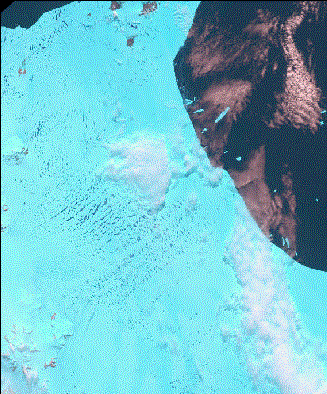Research
My main research interest is in understanding the historical behaviour of, and predicting future changes to, the Greenland and Anatarctic ice sheets.
I am strongly motivated by climate change; the Greenland and Antarctic ice sheets have already made a significant contribution to global sea level rise
and are projected to lose enough ice to raise sea levels by a futher ~20 cm by 2100.
My current work is concerned with identifying processes which may
enhance ice loss (see below), and which are not accounted for in these forward projections. Day-to-day this mostly involves developing improved numerical models of
the Cryosphere, in order to advance their capability for robust estimates of cryospheric change. This is supported by extensive work with Remote Sensing
data and GIS techniques.
Supraglacial lakes on Antarctic ice shelves
In the years leading up to the collapse of the Larsen B ice shelf in 2002, a dramatic increase in the number of SGLs on its surface was observed. Recent process modelling studies have shown that, by repeatedly filling and draining, it is likely that these SGLs were ultimately responsible for its disintegration.
As the climate warms, SGLs form on ice shelves increasingly further south, suggesting that the Larsen C ice shelf may be at risk of collapse, in a similar manner to Larsen B. This project will use remote sensing and modelling to quantify the past and future evolution of SGLs on Antarctic ice shelves, including Larsen B and Larsen C.
Modelling extreme melt events on Greenland (MEMoG)
Extreme melt events, for example during the summer of 2012, constitute a positive feedback contributing to ice loss and sea level rise and are poorly provided for in geophysical models used to forecast future ice sheet change. In this project, funded through the SECURE network, we will use advanced statistical techniques drawn from extreme value theory together with observations and regional climate model output, in order to improve our understanding of the past distribution of extreme melt events on Greenland and update our future predictions of associated ice loss.

